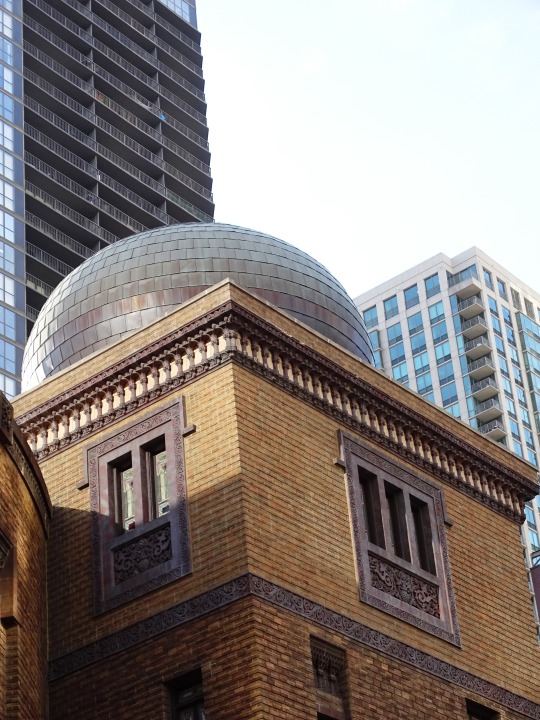#Cowles and Ohrenstein
Explore tagged Tumblr posts
Photo




Interweave Crochet, Summer 2021
The 14 projects here cover a wide range. The cover features two novelty items: the Floating on Waves Tank by Natalie Thomas (see the top right corner which reveals its back look) to the Ananas (French for pineapple) Drawstring bag by Deborah Bagley.
There are also two pretty wraps as well as two cowls. My favorite here is a clever filet crochet design by Adinda Hening called Alinea Wrap which is an easy pattern and shown here in Schweepes Whirl, a long yardage, cotton blend which shifts color as it goes. It is only a 1 out of 4 for difficulty and makes me think I have underestimated the geometric playfulness of filet crochet.
Several more sweaters appear including the purple Pomelo Cardigan by Natasha Robarge in Hikoo Concentric Cotton which is a worked from the bottom up. This is a more difficult pattern at 3 out of 4.
Kirsten Joel designed the Fluid Lines Coverup which is open in the back save for 5 buttons at the top. I can see figuring out a way to add a flare to it and shutting it down the back to avoid that I-am-wearing-a-hospital-gown feeling. It is made from Fibra Natura Flax Lace linen yarn and is a 3 out of 4 for difficulty.
Kathryn A. White wrote the technical article on shaping filet crochet, and Jennifer Mogoyne wrote on three great crochet designers, some of whose work has appeared recently in the magazine’s pages: Dora Ohrenstein, Lily M. Chin, and Doris Chan.
Find it at your local yarn store, bookstore, or online here: https://www.interweave.com/crochet/
#crochet#crochet patterns#interweave crochet#floating on waves tank#natalie thomas#ananas drawstring bag#deborah bagley#adinda hening#alinea wrap#schweepes whirl#pomelo cardigan#natash robarge#hikoo concentric coton#kirsten joel#fluid lines coverup#fibra natura flax lace#dora ohrenstein#lily m chin#doris chan#making#makers#diy#diy projects
9 notes
·
View notes
Photo










Medinah Temple and McCormick Mansion, Chicago
The mansion that houses Lawry’s The Prime Rib was commissioned in 1889 by L. Hamilton McCormick (nephew of the inventor of the McCormick Reaper) and his wife, Constance.
The Italian Renaissance-style home, built at the northeast corner of Rush and Ontario, was designed by the architectural firm of Cowles and Ohrenstein and cost $125,000. When the new mansion was unveiled, its massive fireplaces, splendid wood-work and central majestic winding staircase were the talk of the city.
Throughout the 1890s and early 1900s, the McCormicks hosted brilliant functions and elegant dinners that made Mrs. McCormick famed as one of the city’s great hostesses.
massive fireplaces, splendid wood-work and central majestic winding staircase were the talk of the city
The fourth-floor ballroom, which accommodated 400 and was the largest that had ever been built in a private residence, was the setting for receptions for foreign dignitaries including the Duke of Kent and the Prince of Wales. Many war benefits were staged there during the years of World War I. McCormick died in 1934 and his family leased the great house.
First, it became the site for an exclusive private nightclub. In 1937, it was leased again, to Fredrik A. Chramer, a well-known Chicago restaurateur of Danish birth. Chramer turned the first floor of the mansion into The Kungsholm, an elegant restaurant specializing in Scandinavian dishes and a lavish smorgasbord.
Even closer to Chramer’s heart than Scandinavian cuisine was his love of opera and the theater. In 1940, inspired by puppet shows he had enjoyed in Denmark, Chramer turned the ballroom into the Kungsholm Puppet Theater. The theater offered lavish productions of recorded operas performed by elaborately costumed 13-inch-tall marionettes.
lavish productions of recorded operas performed by elaborately costumed 13-inch-tall marionettes
It became internationally acclaimed and, over the next 30 years, more than one million people, including many famed opera stars, attended the splendid operas. Even Chramer’s death in 1960 didn’t stop the theater. The Fred Harvey restaurant chain took over the building and continued the puppet shows until 1971.
When public interest fell off, the Harvey chain converted the former Kungsholm restaurant into a restaurant called Shipwreck Kelly’s. The theater was renovated and reopened by a local producer as the New Theater at the Kungsholm. Both ventures received terrible reviews, and Shipwreck Kelly’s and the New Theater folded in 1972.
At the time, Richard N. Frank (then Lawry’s CEO and president, today our company’s chairman) was searching for a location for Lawry’s The Prime Rib in Chicago. He was delighted to discover that the McCormick mansion was available, and soon acquired the lease to 100 East Ontario Street.
Richard worked closely with Hutchason, Butkus Associated Architects to renovate the mansion
The building had fallen into disrepair, and for the next two years, Richard worked closely with Hutchason, Butkus Associated Architects to renovate the mansion, restoring its former elegance and refurbishing it in the style of an English manor house.
Lawry’s The Prime Rib welcomed Chicago to its door with a grand opening in May 1974. In the ensuing 35 years, we’re honored and proud to have become a Chicago landmark, preserving the history of our fabled home and creating one of our own.
Source
#Medinah Temple#Huehl and Schmidt#architecture#Moorish Revival#Chicago#USA#cityscape#façade#Illinois#original photography#summer 2019#McCormick Mansion#Near North Side#River North Gallery District#lamp#key#Italian Renaissance style#100 E Ontario Street#landmark#tourist attraction#Cowles and Ohrenstein#Midwestern USA#Great Lakes Region#Windy City#Chitown
3 notes
·
View notes